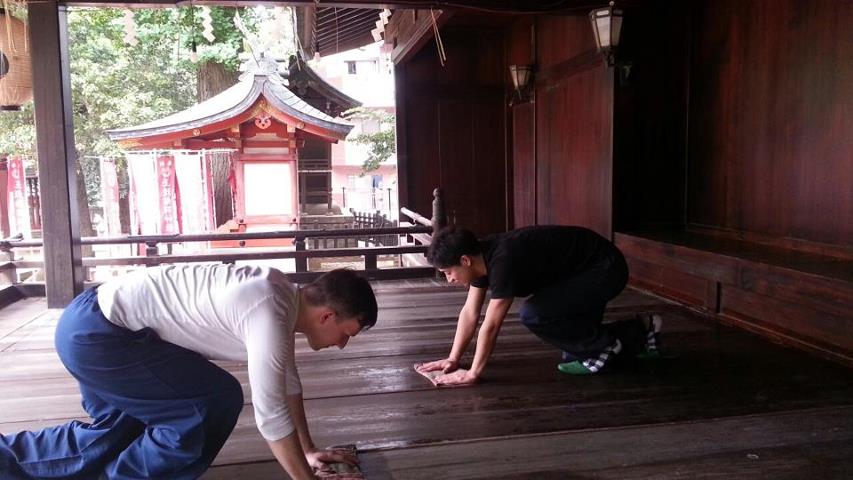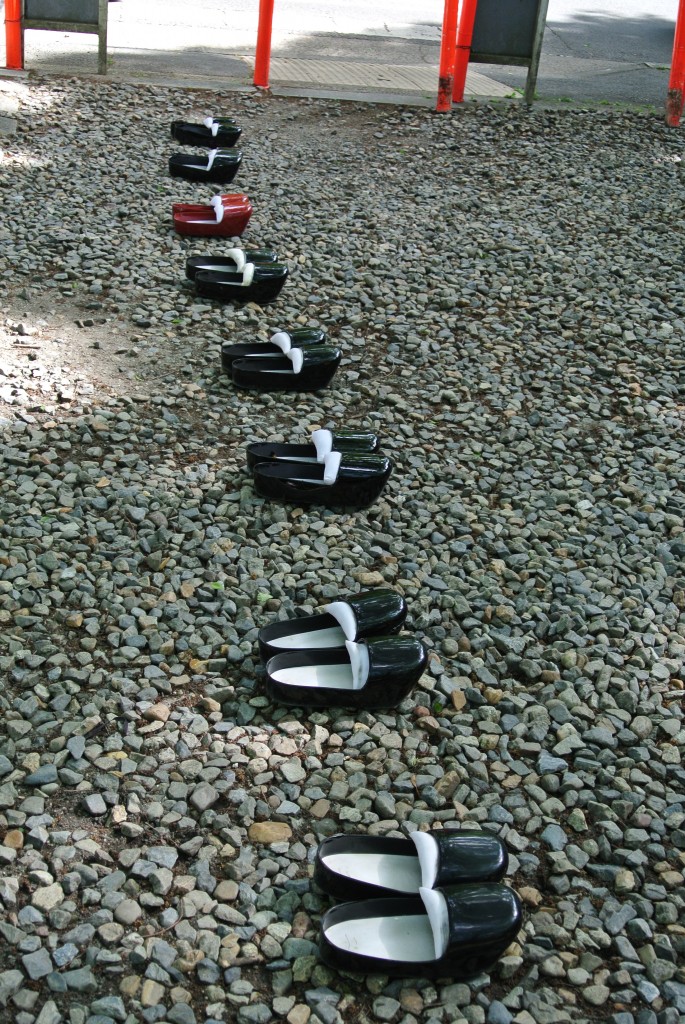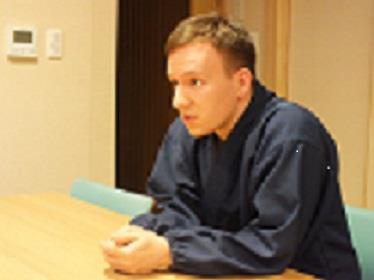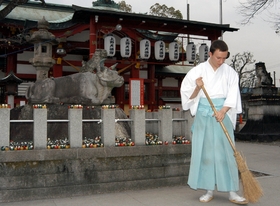Details are emerging now of the breakthrough Austrian priest, who has been appointed through Jinja Honcho to a position at a shrine in Shibuya.
The 25 year old is from Linz in Austria, and first became interested in Japan and Shinto when seeing a picture at age 4 or 5 of the ‘asagutsu‘ black wooden shoes used by priests. It was the beginning of a lifelong fascination.
By the age of 14 Wiltschko had a kamidana in his room and was keen to know more about Japanese culture and history. He studied Kojiki, and by high school he had already formed a resolution to become a Shinto priest. Accordingly he went to do Japanese Studies at Vienna University, to become proficient in the language.
In 2001 Wiltschko got to know Handa Shigeru, the head priest of Ueno Tenmangu Shrine in Nagoya after making enquiries through their English-language website. The head priest later commented that while many foreigners asked questions about Shinto, those of Wiltschko were unusual in being particularly detailed and persistent. Their exchanges lasted for six years, before Handa Shigeru invited the young Austrian to become an apprentice.
While at the Ueno Tenmangu shrine, Wiltschko studied for the basic ‘chokkai‘ licence, then decided to go further and study for the full priest’s licence at Kokugakuin University. As a graduate, he was able to take the two-year course in Shinto, and on May 1, 2012 he was appointed ‘gon-negi’ (lowest rank of priest) at Konno Hachimangu in Shibuya.
Talking of his situation there, Wiltschko said that it was good he was in the middle of Tokyo as it was easier to be accepted as a priest there. His work schedule begins at 6.30 when he has to open the shrine, sweep the grounds, purify himself and then perform rituals and private ceremonies. At 5.30 the shrine shuts, then he cleans up and prepares for the next day.
Regarding the future, he said that his biggest problem was how to overcome the thinking of those who find it difficult to be instructed in Shinto by a foreigner. But he is determined to continue resolutely, not to give in to doubt, and to do his best in helping the locality and fostering a sense of community.
Many have dreamed of such a path. Wiltschko is the first non-Japanese to make it a reality. Our congratulations to him! It’s really a remarkable achievement – even for a native Japanese. Of the roughly 20,000 Shinto priests, only about 25% are full time.

Cleanliness is next to godliness, in Shinto as in Zen.(photo source unknown)

The peculiarly shaped priest's shoes that first caught the imagination of the young Austrian as a child



I’m doing a research project on the Shinto religion and Shinto Shrines and I’d love to contact Florian Wiltschko to ask some questions about it. Is there an email or phone number open to the public I can use to contact him I’ve searched for one, but I can’t seem to find it. If so, please email me as soon as you can. Thank you.
Thank you for writing in with the request. I will pass your email on to him, so it will be up to him if he wishes to contact you
I’m an artist and have been painting portraits of priests from the world’s major religions (Sikh, Hindu, Confucius, Zoroastrian, and so on).
To paint a Shinto priest I understand I need to travel to Japan.
Would you have any advice as to how I go about finding a priest. This work of 17 portraits is non profit and will be donated to an interfaith charity.
Kind regards,
Anthony Kelly
You could try running a search for Taishi Kato who speaks English and works at a shrine in Kansai (search for his interview on Green Shinto). Alternatively you could contact the international representative at Jinja Honcho (National Association of Shrines) and ask them to put you in touch with an English-speaking priest.
Hello !
Could you please send him my email address.
I find his testimony interesting, and I myself am interested in Shinto, Shinto life, spirituality etc.
If he wishes to contact me, that would be good.
In any case, I wish the priest Florian Wiltschko the best, and assuring him of my prayers, I entrust myself to his charity.
Thank you. I have passed your message on to him.
Greetings,
My name is Michael and I have been living in Japan for a number of years, graduating from a Japanese university, and am currently working as a translator/interpreter in Japan.
Having had a deep interest in religion since many years back – especially Buddhism and Shintoism – I’ve recently begun to reevaluate my career choice and felt that I wanted to pursue something more worthwhile.
As such, I was wondering if Mr. Wiltschko could provide some information on how he got onto the path of training to become a Shinto priest, where he studied, how he funded it, etc.? After some brief research, I found that the Kokugakuin located in Shibuya has a Department of Shinto Studies which might be a good candidate and I am planning to eventually go there and inquire directly.
Another question I would like to answer is if my age, 35, is too old to enter the profession?
Yours sincerely,
Michael Shiga
hello and thank you for the contact. As far as I am aware, Kokugakuin is definitely the way to go, as your Japanese is evidently up the level required judging from your work as a translator. Decisions about acceptance of students are of course entirely up to the faculty, so I would say that your plan to go there directly is exactly the best approach you could make. If you could make a personal contact and convince a member of staff of your sincerity and eligibility, that would be an important first step to realising your ambition. Good luck, and if you could keep Green Shinto informed, that would be extremely helpful to the wider community. I will contact you off list with a further suggestion.